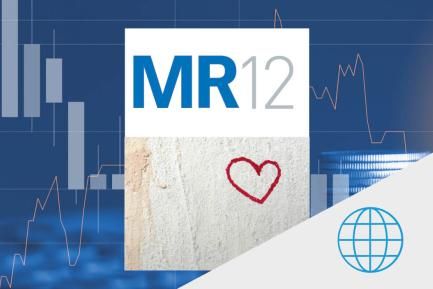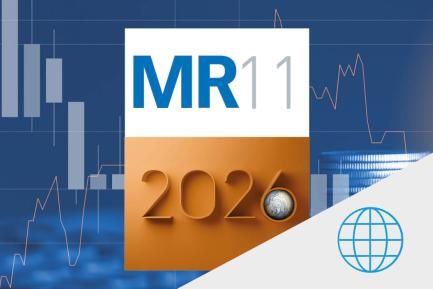
Trump’s announcements detract from the economic indicators
In addition to the uncertainty over the economic impact of the tariffs and the outcome of the trade negotiations, legal doubts have now arisen over the measures adopted by Trump since February.
Ongoing tariff negotiations but with new sources of uncertainty
Following the unprecedented escalation between China and the US that led to reciprocal tariffs well in excess of 100%, on 12 May the two countries agreed on a substantial tariff cut for 90 days and the start of negotiations (see the Focus «US tariffs: where do we stand and what comes next?» in this same report). The tensions persist, however, not only with China but also with the EU, which was surprised by the announcement of a 50% tariff that was finally postponed until 9 July, following Europe’s commitment to accelerate the talks. In addition to the uncertainty over the economic impact of the tariffs and the outcome of the trade negotiations, legal doubts have now arisen over the measures adopted by Trump since February. On 28 May, the US Court of International Trade ruled that Trump lacked the authority to introduce a general increase in protectionism on Canada, Mexico and China, as well as to impose the universal tariff and the «reciprocal» tariffs announced on 2 April. For the moment, we will have to wait for the outcome, since a federal body has accepted the government’s appeal and the tariffs remain in force until a final decision is taken (not before 9 June). In addition, Trump decreed the doubling of the tariff on aluminium and steel to 50% beginning on 4 June. The discussion about the future of the public finances is following all these developments very closely, as the uncertainty is also affecting Trump’s plans to use the revenue from the collection of tariffs to fund his tax cut plan. Congress passed the so-called «One Big Beautiful Bill Act», which includes extensions of tax cuts, new exemptions and cuts to social programmes and could cost 2.5 trillion dollars over the next decade.

Germany led the growth at the start of the year
The revision of the Q1 GDP figures shows a disparate composition by country. Germany revised its growth to 0.4% quarter-on-quarter, versus the initial 0.2%, and Italy confirmed its rate of 0.3%. Both countries based their growth on domestic demand, while their foreign sectors benefited from the boost provided by exports (+3.2% and +2.8% quarter-on-quarter, respectively) due to the «anticipation» of the tariffs. In France, which grew by just 0.1%, only inventories contributed to growth (+1.0 pp) in a context of falling private consumption (–0.2%) and exports (–1.8%). In a way, the monthly indicators already hinted at this growth structure. Industrial production in the euro area grew in March by 2.6% on a month-on-month basis, thanks to Germany’s momentum (3.5%). In France and Italy, industrial production practically stagnated in March. The rise in industrial orders in Germany, especially foreign orders (3.6% and 4.7%, respectively), is not observed in France or Italy. Retail sales also experienced a revival in March in Germany (+0.4% month-on-month), while in France and Italy they remain weak (–0.1% and –0.3%, respectively). In France there is a revival of exports of goods (+5.6%), in Germany they are maintaining the previous growth rate (+1.2%), while in Italy they are declining (–1.0%).

This pattern of behaviour is not sustainable and is due to an anticipation effect that will reverse in the coming months
The euro area’s Purchasing Managers’ Index (PMI) suggests a loss of momentum in Q2 (49.5 in May vs. 50.4 in Q1), due to the slowdown in services activity (48.9 vs. 51.0 in Q1), while manufacturing is holding up slightly better (49.4 vs. 47.6). The European Commission’s Economic Sentiment Indicator rose 1 point in May to 94.8, but it is still below the 100-point threshold. Consumer confidence in the euro area remains among the lowest levels in the last two years, despite the resilience of the labour market (the unemployment rate fell in April to a record low of 6.2%). Headline inflation moderated 0.3 pps in May, reaching 1.9%, while core inflation fell 0.4 pps, to 2.3%, thanks to slower price growth in services (–0.8 pps, to 3.2%). On balance, the indicators point to a rather weak economy without inflationary pressures.

Mixed signals in the US for Q2, after contracting in Q1
It has been confirmed that GDP contracted by 0.1% quarter-on-quarter in Q1, mainly due to the sharp increase in imports (of over 9%). For Q2, the signals are mixed in a context of high uncertainty due to Trump’s tariff policy. The labour market remains strong: in April, the unemployment rate remained at 4.2% and 170,000 non-agricultural jobs were created, above the average of the previous three months. However, consumption is showing signs of weakness. Retail sales grew just 0.1% in April, following a 1.7% rebound in March; this volatility reflects the fact that consumption decisions were brought forward in anticipation of the tariffs. In addition, consumer confidence is deteriorating: the Michigan index fell to a three-year low, while the Conference Board index remains low. In the business sphere, the 90-day trade truce with China provided some relief: the PMI rose in May by 1.5 points, to 52.1, compared to an average of 52.6 in Q1. However, this rebound is largely explained by a record increase in inventories amid fears of future shortages due to the tariffs, so the doubts about the weakness of industry persist, with production stagnating in April after having fallen 0.3% in March.

The risks to US inflation are concentrated to the upside
So far, the impact of the tariff hikes on final prices has been limited. In April, headline inflation fell 0.1 pp, to 2.3%, thanks to lower energy prices, while the core index remained at 2.8%. However, the price components of the economic climate and sentiment indicators warn of the risk of future increases. Business leaders reported in May the largest price increase since August 2022. Consumers’ inflation expectations are also high: the University of Michigan’s May survey placed expected inflation one-year in the future at its peak levels since 1981.

The Chinese economy shows signs of cooling at the start of Q2
After growing at a quarter-on-quarter rate of 1.2% in Q1, the available indicators point to a widespread slowdown in economic activity in the opening weeks of Q2. In April, industrial production grew by 6.1% year-on-year (vs. 7.7% in March), retail sales by 5.1% (vs. 5.9%) and urban investment maintained rates of around 4.0%. Confidence among business leaders and consumers is also suffering: in April, the manufacturing PMI fell 1.5 points, to 49.0, while the services PMI remains practically stagnant (50.1 vs. 50.3). Exports grew by 8.1% year-on-year (vs. 12.4%), thanks to the success of China’s strategy to «pivot» towards its Southeast Asian neighbours as alternative markets to the US. However, the trade tensions persist and progress in the negotiations is expected to be slow.



